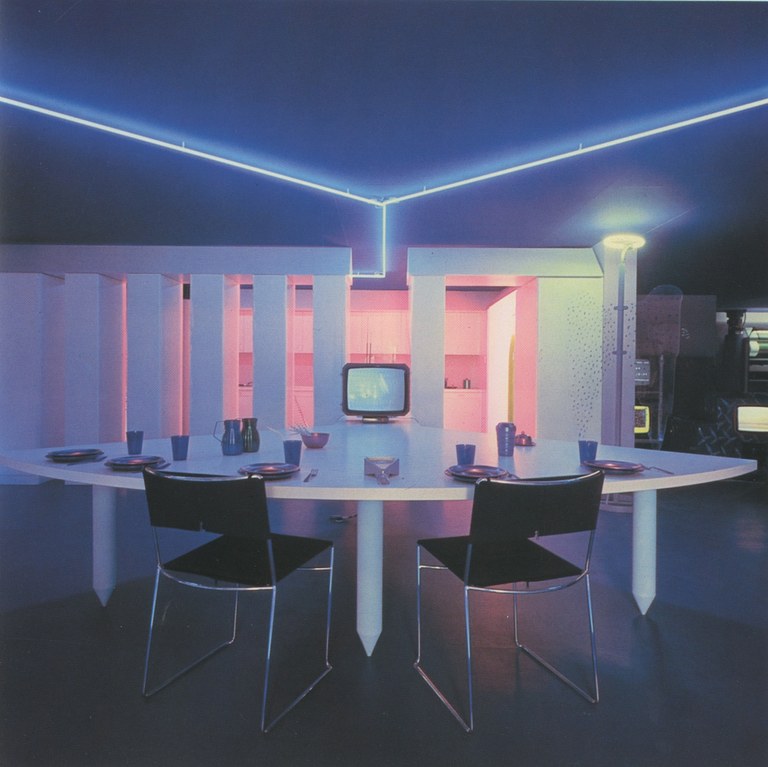Davide Spina // Architecture and Television in 1980s Milan
Since its spread in the post-war era, television has completely changed the way we live and work. As a gateway for news and entertainment, it transformed how we make sense of ourselves and the world. As an object commanding our attention for several hours a day, it changed how we design and experience domestic and public space. However, despite its manifold effects on human life, the medium has barely registered in architectural history. And when it did, it was mostly as a platform for the mediatisation of architectural works, events, and figures. To date, in fact, historians have predominantly focussed on architecture on television (i.e. televisual representations of buildings). Yet, there is still a lot to learn about the architecture of television (i.e. the architectural and spatial shifts resulting from the advent of the medium), all the more so since architects have contributed to television’s operations in many ways (by designing television studios, infrastructures and sets, as well as by imagining spaces for the reception of TV broadcasts). Conversely, television has inspired more than one architect to rethink the discipline’s place and possibilities in the world. And so, now that television as we know it is slowly sliding into oblivion, what can architectural historians make of its legacy? This research project examines the intersections of architecture and television in Milan in the 1980s. During this period, the city became a major hub for commercial television broadcasting, with architects and designers playing a vital role in this transformation. The project focuses on two primary areas: (1) Architecture in Television: Set designs first, but also the material network of broadcasting centres, pop-up studios and antennas necessary for the production and dissemination of TV content. (2) Television in Architecture: The ‘architectural consumption’ of television, or, how the TV screen changed the design and experience of domestic and public space.
This research project examines the intersections of architecture and television in Milan in the 1980s. During this period, the city became a major hub for commercial television broadcasting, with architects and designers playing a vital role in this transformation. The project focuses on two primary areas: (1) Architecture in Television: Set designs first, but also the material network of broadcasting centres, pop-up studios and antennas necessary for the production and dissemination of TV content. (2) Television in Architecture: The ‘architectural consumption’ of television, or, how the TV screen changed the design and experience of domestic and public space.
[Caption: Ugo La Pietra, La casa telematica, Milan, 1983, Ugo La Pietra Archive]
